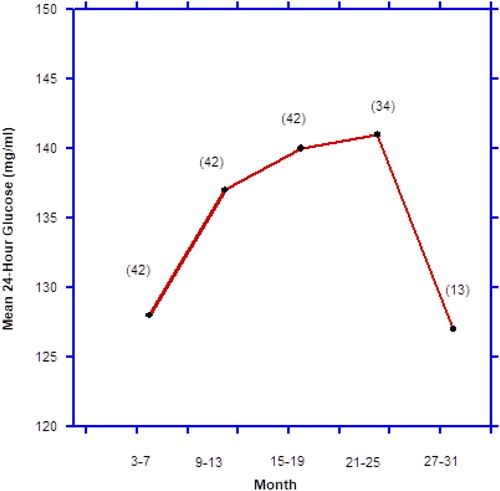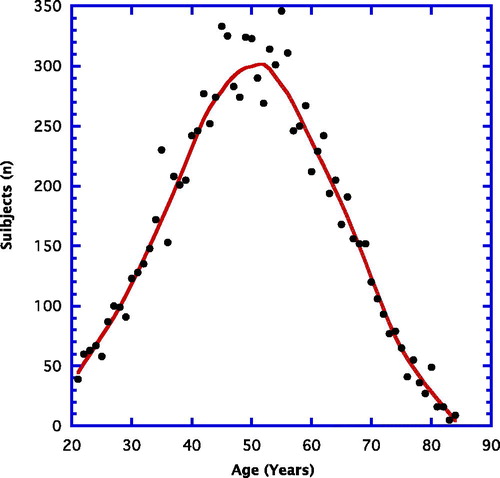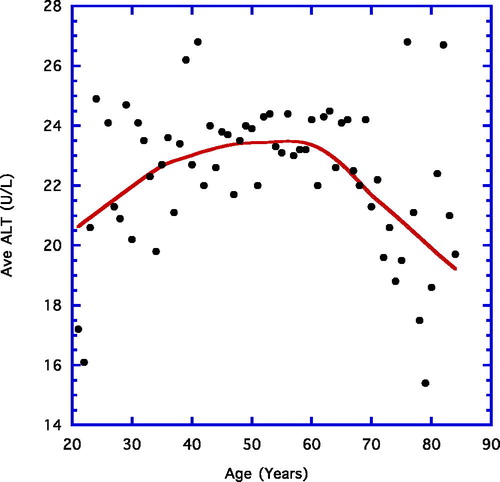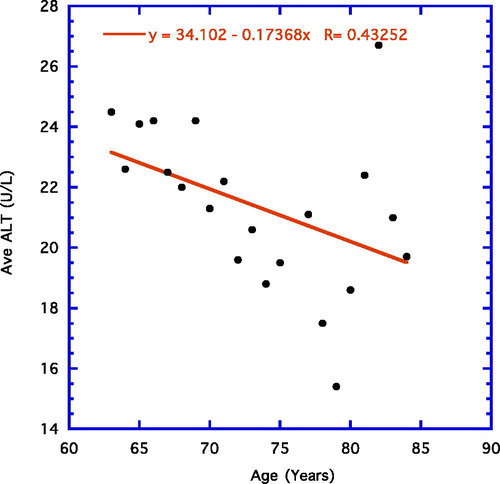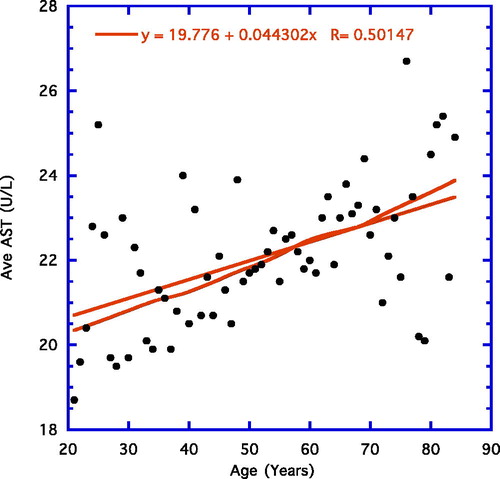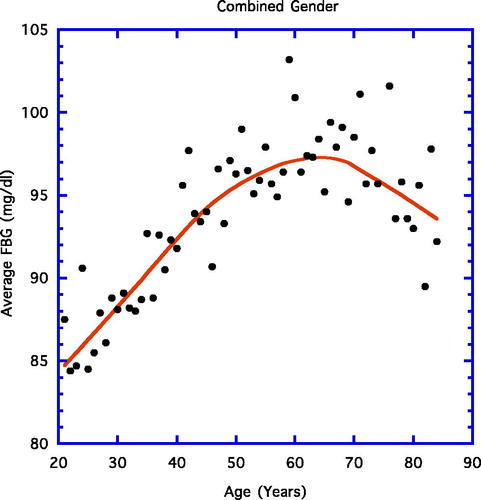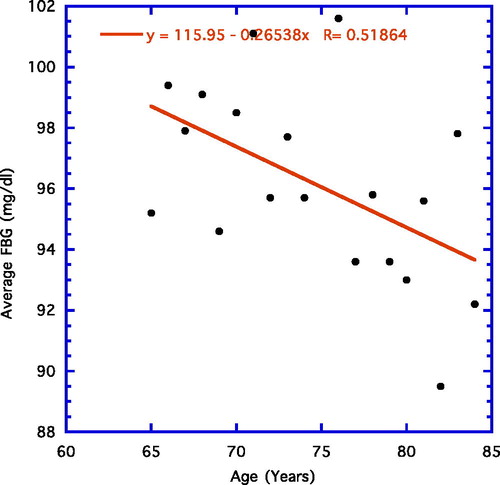Figures & data
Table 1. Correlation of aminotransferases (ALT, AST) at different ages of individual subjects.
Table 2. Parameters showing aging paradox displayed in grey (age in years vs. dependent variable).
Table 3. Aminotransferases correlations with FBG at different ages of individual subjects.
Table 4. Mean 24-hour plasma glucose concentration (mg/dl).
Figure 8. Example of survivor bias. Average mean 24-hour glucose levels over the combined life-span of ad libitum fed and caloric-restricted male F344 rats. Figures in parentheses indicate number of rats surviving at that point. Data derived from Masoro EJ, McCarter RJM, Katz MS, McMahan CA: Dietary restriction alters characteristics of glucose fuel use. J Gerontology. 47:B202–B208, 1992.
